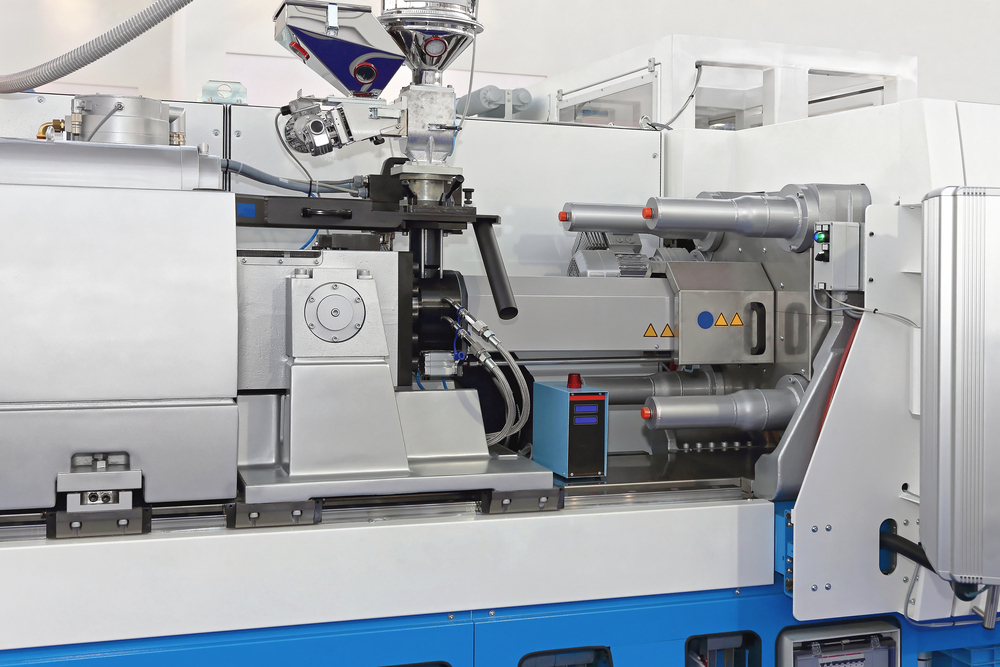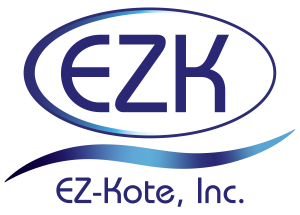
EZ-Kote manufactures and provides first-class water-based mold release agents for industrial processes to help you get better cost-effectiveness out of your production lines and equipment.
Today, we answer frequently asked questions about molding and casting.
What is the difference between molding and casting for plastics?
The main difference between molding and casting involves the processes used to make products and the types of polymers you can use for each process.
Casting is the least complex process as it involves heating plastics to a liquid and pouring it into a mold before it cools. Gravity assists by filling the mold cavity from above. Casting relies on atmospheric pressure and temperature to cool products. Once cooled, the mold is released.
Plastic molding occurs when machinery, such as an injector, applies a significant force to push the plastic into the mold cavity.
What types of materials are great for plastic casting?
Plastics great for casting include polystyrene, acrylic, polyester, polyurethane, and Nylon type 6.
Plastics that heat readily into a viscous liquid are great candidates for casting.
What products can I make with plastic casting?
You can make toys, automotive parts, packaging bottles, and storage containers.
What materials work well for molding processes?
Molding works much better for polymers that melt to the consistency of bread dough before cooling. Resins work great in molds.
For plastic injection molding, you can utilize:
- Polypropylene
- Polystyrene
- Polyethylene
- Polycarbonate
- Nylon polyamide
- Polyoxymethylene
- Thermoplastic elastomers
- Thermoplastic polyurethane
- Polymethyl methacrylate (acrylic)
- Acrylic butadiene styrene (ABS)
What products can you make from plastic molding processes?
You can manufacture many types of items from plastic molding, such as:
- Plastic bottles and bottle caps
- Electronic housings
- Toys
- Parts for cars and agricultural equipment
- Drinkware
- Containers
- Bumpers
- Dashboards
- Plastic syringes
- Outdoor furniture
- Plastic cups
- Storage racks
- Flower pots
- Serving pans
- Bowls
- Plates
- Buttons
- Knobs
What kind of molds are used in casting?
You have options when it comes to the molds used for casting.
Ceramic molds. This process starts with a wax mold, and then ceramic is poured over the permanent mold. The wax is then melted away, leaving the finished mold in place. Then the casting material is poured into the cavity in place of the wax. Once the material cools enough, the mold is released.
Permanent molds. A permanent mold is often made of steel, iron, aluminum, silicone, or urethane. The plastic is either poured or injected into the mold. Hard materials for permanent molds only work if there are no undercuts in the cast.
Multi-piece molds. Just as the name suggests, multi-piece molds allow for several plastic parts to come together. This process works best for complex parts or if you have products that need multiple colors.
Molds can be made of different materials and handle various plastics, which means you’ll need different types of mold release agents depending on what substances need to be released.
What are the different types of molding processes?
Injection molding uses injectors to create three-dimensional objects. Injectors use pressure to distribute liquid plastics into a mold.
Blow molding uses air to shape plastic in a mold once the liquified product goes in the mold.
Rotational molding forms a hollow space in the middle of the mold due to the forces that move the mold as molten plastic enters it.
Compression molding uses pressure to make liquid plastic into the right shape, and this works well for larger objects that need both strength and a thin profile.
What types of plastic casting processes are there?
Typically used with plastisol, there are three main types of plastic casting. The main differences among them are the physical processes used to distribute the plastics.
- Dip casting. Inside the mold is a heated plug that keeps the plastic at a specific temperature. Machinery withdraws the mold at a specific rate, and the plastic adheres to the mold as it begins to cool. Once cooled all the way, the plastic is removed from the mold.
- Rotational casting ordinarily uses a two-piece mold rotated in two planes to distribute the plastic against the walls of the mold to create a thin, even layer as it solidifies.
- Slush casting occurs when a hollow mold is heated and plastisol is poured over it. The plastisol solidifies, and the longer it remains in contact with the mold, the thicker the plastic will be.
What are the main advantages of molding?
Injection molding, in particular, has several advantages, including:
- Fast production, with speeds of anywhere from 15 to 120 seconds per piece, depending on the complexity.
- Lower labor costs due to a high production rate and efficiency from automation.
- Reduced waste when you can recycle excess plastic that you don’t need in a particular mold.
- Flexibility with materials and color. Thermoplastics and polymers come in many different types of colors and materials, all of which offer unique physical properties to work with.
- Improved strength, particularly with integrated parts.
- Ability to create complex and intricate parts.
What are the main advantages of casting?
- Cost of equipment is lower compared to molding.
- Process is simpler, as gravity runs the process.
- Products have little to no internal stress, which improves strength and reliability.
How do mold release agents work for molding and casting?
Mold release agents make it easier for you to separate the plastics from the mold or cast. Designed to adhere to the mold while allowing the product to release, these chemicals have special properties to make your molds and industrial processes more effective to save you money on labor and materials by reducing defects and downtime.
How often should I touch up mold release agents on my molding and casting equipment?
This depends on several factors, such as the heat of the mold, type of material in the mold, and atmospheric conditions in your plant. You might need a touch-up every five heats, 10 heats, or once an hour, based on how you see your equipment perform. EZ-Kote can guide you on how often you need to touch up your molds with our release agents with our own knowledge and looking over your trial run data.
Talk to EZ-Kote Today
Searching for world-class mold release agents for your industrial equipment? EZ-Kote’s engineers and experienced chemists can show you how to improve your mold release process.
Contact EZ-Kote or call (770) 720-1811 for more information on our mold release solutions for your company.
